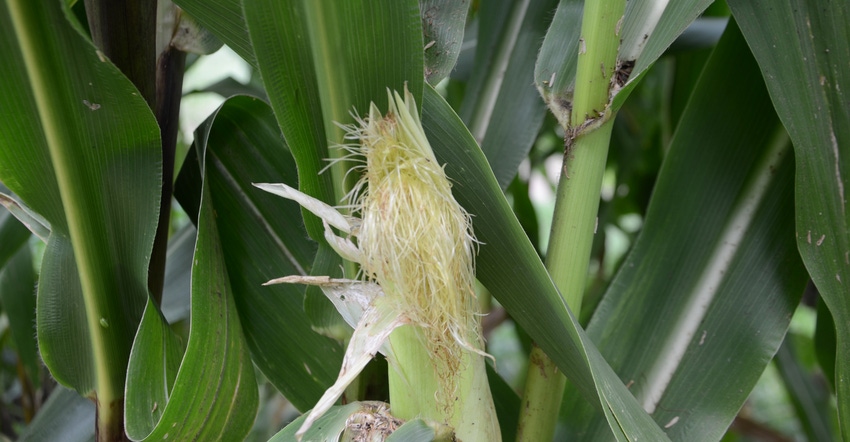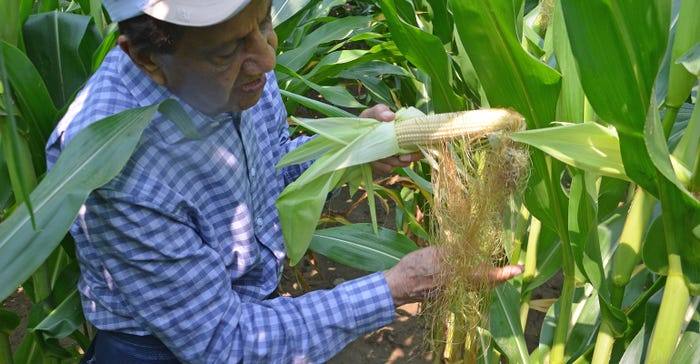
Walking through cornfields now, you may find ears where silks were clipped short. That’s a sign that an insect, likely either Japanese beetles or rootworm beetles, clipped silks during pollination. What can you do now? What could you have done about it? Is it a big deal?
“The answers depend upon how many ears were affected and how many beetles were feeding,” says Dave Nanda, director of genetics for Seed Genetics Direct, sponsor of the Corn Watch ’22 field. “The ultimate answer boils down to whether pollination was greatly affected or not.”
Related: Tillers usually not cause for concern
Here are more detailed answers to those three questions:
1. What can you do about silk clipping now? Once you find clipped silks in mid-August, the damage is done, Nanda says. “The only thing you can do is shuck a few affected ears and see how well they pollinated,” he adds. “If pollination is just wrapping up, do a shake test.”
To do the test, simply pull back husks and hold the ear horizontal in front of you. Shake it gently.
“If silks fall off, then those ovules were pollinated and will form kernels,” Nanda explains. “If silks remain attached, pollination failed to occur. Perhaps the silks were clipped too short to receive pollen grains. There will be no kernels.”

2. What could you have done about silk clipping? If you scouted and found beetles clipping silks earlier, you could have determined if conditions warranted spraying an insecticide to slow down silk clipping. The Purdue University Corn & Soybean Field Guide spells out the economic threshold for spraying an insecticide if silk clipping is occurring or is a threat.
According to the guide, if silks are clipped to less than a half-inch before pollination is 50% complete, and beetles are present and actively feeding, spraying an insecticide would be warranted.
“If pollination is already over — say silks are brown — then you’re just spraying an insecticide for revenge,” Nanda says. “The damage is already done.”
3. Is silk clipping a big deal? How many ears were damaged by silk clipping, and how much individual ears were affected due to silk clipping interfering with pollination will determine if yield will be impacted, and to what degree, Nanda says.
If several ears completely fail the shake test, meaning they didn’t pollinate at all, then yes, it’s a big deal. More likely, most ears pollinated, but perhaps pollination on some ears was spotty where some silks were clipped and didn’t get pollinated.
“You will have to determine what percentage of overall kernels might be missing to get a handle on possible yield loss due to silk clipping,” Nanda concludes.
About the Author(s)
You May Also Like




